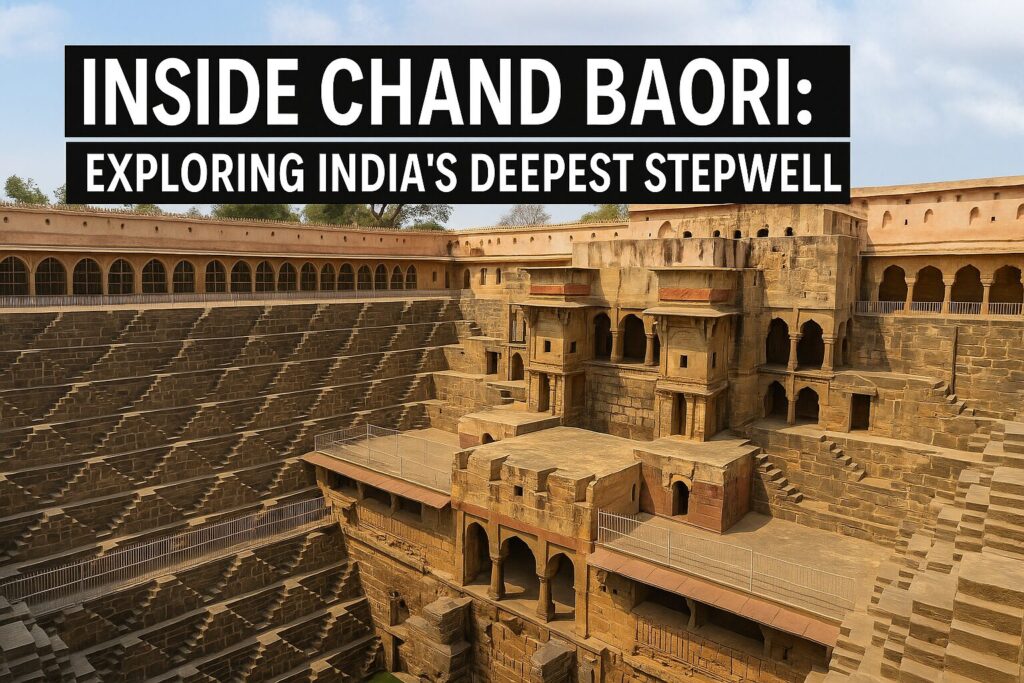Discover the mystery of The Hand in the Desert, Chile a giant sculpture in the Atacama Desert symbolizing isolation, emotion, and human resilience.
Table of Contents
Introduction: A Surreal Monument in the Middle of Nowhere
Rising unexpectedly from the sands of Chile’s Atacama Desert is a massive stone sculpture known as The Hand in the Desert. With fingers stretching skyward, this surreal monument looks almost like the remains of a giant buried beneath the earth, reaching out for help.
Unlike ruins of ancient civilizations, this colossal hand is a modern creation yet it has sparked endless curiosity and mystery. Travelers stumble upon it while driving through one of the driest regions on Earth, often stunned by the contrast: a solitary human form in a landscape where life itself is scarce.
The sculpture has become more than just a roadside curiosity. It’s a symbol of human fragility, artistic imagination, and the haunting vastness of the Atacama. Over the years, it has drawn adventurers, artists, photographers, and even conspiracy theorists, each interpreting its meaning in their own way.
Where Is the Hand in the Desert Located?
The Hand in the Desert stands in the heart of Chile’s Atacama Desert, one of the driest and most surreal landscapes on the planet. Specifically, it is located about 75 kilometers (46 miles) south of Antofagasta, a coastal city in northern Chile. The sculpture rises out of the sand beside the Pan-American Highway (Ruta 5), the legendary road that stretches across the entire length of the Americas.
What makes its location extraordinary is not just the remoteness but the extreme environment that surrounds it. The Atacama Desert is often described as the driest non-polar desert on Earth, with some regions having recorded no rainfall for centuries. This makes the appearance of a giant hand even more striking an image of humanity set against one of the most inhospitable places on Earth.
For travelers, the site is relatively accessible despite its isolation. There are no nearby villages, tourist centers, or amenities just endless stretches of barren land, rocky hills, and open skies. This sense of emptiness heightens the drama of encountering the sculpture. Many describe it as stumbling upon a dreamlike vision in the middle of nowhere.
The hand sculpture in the Atacama Desert is not hidden or fenced off. Instead, it stands freely, exposed to the elements and open for anyone driving the desert highway to stop, explore, and reflect upon its presence.
The Story Behind the Sculpture: Who Built It and Why
The Hand in the Desert was created by Chilean sculptor Mario Irarrázabal in 1992. Known internationally for his monumental works, Irarrázabal often uses hands in his art as a universal symbol of human emotion and vulnerability. His most famous works include similar sculptures in Uruguay, Spain, and Venice, but the Atacama piece stands out because of its remote and haunting setting.
The sculpture was commissioned by a local organization called the Corporación Pro Antofagasta, which sought to create a landmark that would give the region an artistic identity and attract cultural tourism. Instead of building something conventional, Irarrázabal proposed a surreal and thought-provoking monument that would harmonize with the desert’s emptiness.
Why a hand? For Irarrázabal, hands are more than physical forms they represent human struggle, creativity, suffering, and hope. A hand can reach out for help, wave in greeting, or stand as a silent witness. In the Atacama, the raised hand seems almost like a cry for survival in an environment that offers none, reminding visitors of the fragility of human life against nature’s vastness.
Interestingly, the hand has also sparked many interpretations beyond the artist’s original intent:
- Some see it as the hand of a buried giant, connecting myth and landscape.
- Others interpret it as a memorial to the victims of injustice and oppression in Chile’s past.
- Many travelers view it as a marker of resilience, a symbol of human presence in an otherwise barren world.
Ultimately, Irarrázabal left the sculpture open to interpretation, ensuring that it would always provoke reflection and wonder in those who encounter it.
Symbolism and Meaning: What Does the Giant Hand Represent?
The beauty of The Hand in the Desert lies in its ambiguity. Mario Irarrázabal never imposed a single explanation, allowing the sculpture to take on different meanings depending on who stands before it. Over time, it has become a canvas for personal, cultural, and even political interpretation.
At its core, the hand embodies human vulnerability. Rising from the barren sands of the Atacama, it appears as though a giant figure is trying to emerge or perhaps sinking beneath the earth. This duality creates a tension between hope and despair: is the hand reaching upward for salvation, or waving farewell to existence?
Beyond existential symbolism, many Chileans and travelers connect the sculpture to deeper themes:
- Fragility of Human Life: The hand contrasts the smallness of humanity with the immensity of nature, especially in one of the harshest deserts on Earth.
- Memory and Resistance: Some view it as a silent tribute to victims of hardship and political oppression, especially given Chile’s turbulent 20th-century history.
- Universal Connection: Hands are universally understood they build, comfort, protect, and express. In this sense, the sculpture transcends language and culture.
- Surrealism in the Desert: Its dreamlike presence echoes surrealist art, where ordinary forms are placed in extraordinary settings to challenge perception.
Much like the desert itself, which is both lifeless and profoundly beautiful, the giant stone hand in the desert holds contradictions. It is both lonely and welcoming, fragile yet enduring, silent yet deeply expressive.
How Big Is It? Fascinating Facts and Figures
One of the reasons The Hand in the Desert leaves such a powerful impression is its sheer scale. It is not a small roadside sculpture but a giant stone hand in the desert that towers over visitors and dominates the barren horizon.
Here are some striking facts and figures about its size and construction:
- Height: The hand measures approximately 11 meters (36 feet) tall, making it visible from a considerable distance across the flat desert landscape.
- Material: It was built using concrete and iron, ensuring durability against the Atacama’s extreme conditions intense sunlight, temperature swings, and abrasive winds.
- Foundation: The structure is deeply anchored into the ground, creating the illusion that most of the “giant” is buried beneath the desert sands.
- Proportions: The hand is deliberately larger than life, with elongated fingers that exaggerate its surreal and unsettling presence.
What’s fascinating is how human figures look beside it. Travelers who stand at its base are dwarfed, appearing almost toy-like in comparison. This deliberate scale shift plays into Irarrázabal’s vision of highlighting the fragility of humanity against the vast forces of nature.
Another interesting fact is that the sculpture has become a “living” work. Over the years, visitors have left graffiti, drawings, and signatures on its surface. While this has caused controversy balancing preservation versus public interaction it has also added another layer of meaning: the hand doesn’t just stand in isolation; it continues to be touched, altered, and remembered by those who encounter it.
The Desert Setting: Why the Atacama Was Chosen
The placement of The Hand in the Desert is no accident. Sculptor Mario Irarrázabal specifically chose the Atacama Desert because of its otherworldly atmosphere and symbolic weight. The Atacama is not only the driest non-polar desert in the world but also one of the most visually striking landscapes on Earth. Its emptiness, silence, and vast horizons provide the perfect backdrop for a monument meant to evoke human fragility.
Several reasons explain why this setting was ideal:
- Isolation: The Atacama offers almost complete solitude. With no urban sprawl, noise, or greenery around, the hand appears more dramatic—like a lone sentinel in the sands.
- Contrast: The giant hand sculpture in the desert stands in stark contrast to the barren environment. Its human shape disrupts the endless monotony of sand, rock, and sky.
- Eternal Quality: The Atacama’s dry climate slows weathering. This makes it a natural gallery where art can endure for decades, untouched by rain or humidity.
- Cosmic Connection: The desert is also famous for astronomy. Its clear skies and minimal light pollution attract the world’s most advanced observatories. In this way, the hand feels almost cosmic, as if reaching toward the stars.
The Atacama itself has a mystical reputation. NASA scientists use it to simulate Mars missions because of its resemblance to Martian terrain. Against such a backdrop, the hand sculpture in the Atacama Desert feels almost alien, as if it were the relic of a forgotten civilization or a message left for future ones.
Is It Real or Just a Tourist Attraction? Debunking Myths
Because of its surreal appearance, many first-time visitors or online viewers wonder if The Hand in the Desert is even real. Its dramatic setting and giant proportions have sparked countless myths, memes, and even conspiracy theories. Some believe it’s a digital artwork, while others think it’s an abandoned movie prop.
The truth, however, is clear: the sculpture is completely real, built in 1992 by Mario Irarrázabal, and it stands physically in the Atacama Desert for anyone to visit. It is not hidden in a theme park or part of a promotional stunt it’s a permanent, standalone artwork in one of the most remote places on Earth.
Yet the myths persist, and here’s why:
- Unreal Landscape: The Atacama Desert itself looks alien, with stretches of terrain resembling Mars. Adding a giant hand only intensifies the feeling of stepping into a science fiction movie.
- Few People Around: Because the site is isolated, photos often show the hand without any people nearby. Without a sense of scale, it looks computer-generated.
- Viral Internet Culture: Images of the sculpture frequently circulate online without context, making viewers question whether it’s a Photoshop creation.
While it certainly attracts tourists, calling it just a tourist attraction would be misleading. Unlike typical roadside stops or theme-park installations, the giant stone hand in the desert is a genuine work of contemporary art meant to provoke thought and emotion, not just to serve as a backdrop for photos.
Its mystery endures precisely because it blurs the line between reality and imagination. Standing before it, travelers often describe the experience as both eerie and awe-inspiring, a reminder that not all art belongs in museums some of it belongs in the silence of the desert.
Best Time to Visit and How to Get There
Visiting The Hand in the Desert is an adventure in itself. Because it is located in the remote Atacama, careful planning ensures a smoother and safer trip.
Best Time to Visit
The Atacama Desert is extreme, but it offers different experiences depending on the season and time of day:
- Early Morning & Late Afternoon: These times provide the best lighting for photography, with long shadows and softer tones. Midday sun can be harsh and flatten the sculpture’s details.
- Cooler Months (April–September): Temperatures are milder, making travel more comfortable.
- Nighttime Visits: Some travelers stop by at night to see the sculpture under the desert’s famously clear skies, where the Milky Way is often visible.
How to Get There
The sculpture is found along the Pan-American Highway (Ruta 5), about 75 km south of Antofagasta.
Options to reach it include:
- By Car: Renting a car from Antofagasta is the most convenient. The drive takes about an hour and allows flexibility to explore at your own pace.
- By Bus: Intercity buses traveling Ruta 5 pass nearby, but they don’t stop directly at the hand. You’d need to arrange a drop-off or walk from the nearest stop, which is not ideal in desert conditions.
- Tours: Some guided tours include the hand as part of a broader Atacama experience, combining it with salt flats, valleys, or observatories.
Important Tips
- Bring water, as there are no facilities nearby.
- Expect complete isolation there are no shops, cafes, or rest stops at the site.
- Ensure your vehicle has enough fuel before leaving Antofagasta.
- Carry sunscreen and protective clothing; the desert sun is intense year-round.
The effort to get there is part of what makes the visit special. By the time you stand before the hand sculpture in the Atacama Desert, you’ll feel the weight of its solitude and your own smallness within the vast desert.
Photography Tips: Capturing the Sculpture Perfectly
For many travelers, visiting The Hand in the Desert is as much about the experience as it is about capturing the perfect photo. Its surreal shape against the endless horizon offers a unique challenge and opportunity for photographers whether using a professional camera or just a smartphone.
Best Angles and Perspectives
- Low Angle Shots: Kneel or lie close to the base to exaggerate the hand’s towering height.
- Wide Shots: Include the surrounding desert to emphasize its isolation and scale.
- Close-Ups: Focus on the texture of the concrete and iron, which contrasts beautifully with the smooth desert sands.
- Silhouette Shots: Position the hand between you and the setting or rising sun for dramatic silhouettes.
Playing with Scale
Because of its size, you can create playful illusions:
- Stand at the base to look tiny beside the giant stone hand in the desert.
- Pose as if you’re “high-fiving” the sculpture.
- Use forced perspective to make it look like you’re holding the fingers.
Lighting Tips
- Golden Hour (early morning or late afternoon) adds warmth and depth.
- Blue Hour (just before sunrise or after sunset) creates a moody, dreamlike atmosphere.
- At night, long-exposure shots with the Milky Way above the hand can be breathtaking.
Practical Advice
- A tripod is useful for night or low-light photography.
- Protect your equipment the desert is dusty and windy.
- Always carry extra batteries and memory cards, as there are no facilities nearby.
The combination of stark desert emptiness and the sculpture’s human form makes it one of the most photogenic landmarks in South America. Every angle offers a new interpretation, turning a simple stop into an unforgettable creative opportunity.
Conclusion: A Silent Symbol Standing Tall in the Sands
The Hand in the Desert is more than a roadside landmark it is a dialogue between art, nature, and human imagination. Rising from the barren sands of the Atacama, it captures the fragility of human existence in contrast to the vastness of the Earth’s driest desert. Whether seen as a cry for help, a gesture of resilience, or simply a surreal artistic vision, the sculpture continues to inspire wonder and reflection in all who encounter it.
What makes it remarkable is not just its size or design, but its placement. Alone in an empty desert, the hand transforms isolation into meaning. Travelers who journey to see it often describe the experience as haunting yet strangely comforting a reminder that art doesn’t always live in museums or cities, but sometimes in the silence of the world’s forgotten corners.
Ultimately, the hand sculpture in the Atacama Desert stands as a timeless symbol: silent, mysterious, and enduring. Like a fossil of imagination embedded in stone, it reaches upward not only into the sky but into the human spirit inviting us to pause, reflect, and feel connected to something far larger than ourselves.





